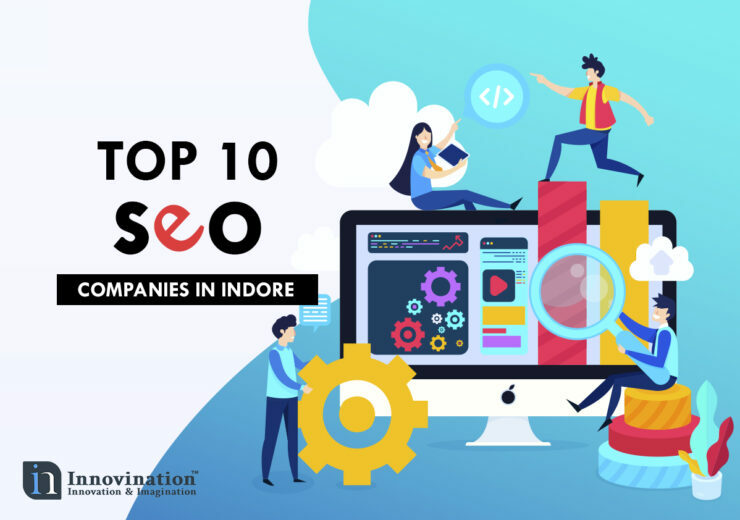Guidance on How to Do Digital Marketing Work for Your Business
Updated at: March 26, 2024

What is Digital Marketing?
Digital marketing is the practice of promoting products, services, or brands through digital channels such as search engines, social media, email, and websites. It involves the use of various tactics and strategies to reach and engage with customers through digital technologies.
This can include search engine optimization (SEO), pay-per-click (PPC) advertising, social media marketing, content marketing, influencer marketing, email marketing, and mobile marketing.
The goal of digital marketing is to increase brand awareness, drive website traffic, and ultimately convert leads into customers. It is an ever-evolving field that requires businesses to stay up-to-date with the latest technologies and trends in order to be successful.
How Does Digital Marketing Work?
Digital marketing works by utilizing various digital channels to reach and engage with customers. Some of the key elements of digital marketing include:
Search Engine Optimization (SEO):
SEO involves optimizing a website and its content so that it ranks higher in search engine results. This can be achieved through the use of keywords, meta tags, and other techniques that help search engines understand the content of a website.
Pay-Per-Click (PPC) Advertising:
PPC advertising involves placing ads on search engines or other websites and only paying when someone clicks on the ad. This can be a cost-effective way to drive traffic to a website.
Social Media Marketing:
Social media platforms such as Facebook, Twitter, and Instagram can be used to build relationships with customers and promote products or services. This can include creating and sharing content, running social media ad campaigns, and engaging with customers through comments and messages.
Content Marketing:
Creating and sharing valuable, relevant, and consistent content can help attract and engage with customers. This can include blog posts, videos, infographics, and other forms of content.
Influencer Marketing:
By partnering with individuals who have a large following on social media, businesses can reach a wider audience and gain credibility and trust.
Email Marketing:
Email marketing involves sending promotional messages or updates directly to a customer’s inbox. This can be an effective way to keep customers informed and engaged.
Mobile Marketing:
Mobile marketing involves reaching customers through their mobile devices, such as through SMS messaging or mobile apps.
All of these elements work together to help businesses increase brand awareness, drive website traffic, and ultimately convert leads into customers. However, businesses need to be strategic in selecting the most appropriate element(s) that align with their marketing objectives, target audience, and budget.
Learn more: https://www.investopedia.com/terms/m/mobile-marketing.asp
What Can You Achieve with Digital Marketing?
In today’s digital age, consumer behavior and expectations have shifted significantly. To stay competitive in the market, businesses must adapt and explore the opportunities that digital marketing offers. Understanding and leveraging digital marketing is crucial to meet the changing needs of modern consumers and achieving business success in the post-digital transformation era.
A recent study shows that a large portion of the population, 1.8 billion people, engage in online shopping. Even among those who do not shop online, a significant percentage, 63%, start their shopping journey on the internet by researching and discovering information about products. This highlights the importance of the internet in both purchasing and researching products for consumers.
Digital marketing can help businesses achieve a variety of goals, including:
Increasing Brand Awareness:
By utilizing various digital channels, businesses can reach a wider audience and increase awareness of their products or services.
Driving Website Traffic:
Digital marketing strategies such as search engine optimization (SEO) and pay-per-click (PPC) advertising can help drive more traffic to a website.
Generating Leads:
Digital marketing can help businesses generate leads by capturing contact information from potential customers through forms or landing pages.
Converting Leads Into Customers:
By using targeted marketing campaigns and personalized messaging, businesses can convert leads into customers.
Improving Customer Engagement:
By interacting with customers through social media and email marketing, businesses can build stronger relationships and improve engagement.
Measuring and Analyzing Results:
Digital marketing allows for easy tracking and measurement of results, which helps to analyze the effectiveness of marketing campaigns and optimize future efforts.
Cost-Effectiveness:
Digital marketing often offers a more cost-effective approach to reaching customers compared to traditional marketing methods.
Targeting:
Digital marketing allows the targeting of specific audiences based on demographics, interests, behaviors, and other factors which helps in reaching the right audience with a personalized message.
All of these goals can ultimately lead to increased sales and revenue for a business. However, the specific goals and success of a digital marketing campaign will depend on a variety of factors, including the business’s industry, target audience, and marketing objectives.
Advantages and Disadvantages of Digital Marketing
Important Factors to Build a Digital Marketing Strategy:
Identify Your Goals –
Digital marketing goals are objectives that a business sets to achieve through its online marketing efforts. These goals can vary depending on the company’s overall objectives and target audience.
Digital marketing goals are important because they provide a clear direction and focus for a business’s online marketing efforts. Setting specific, measurable, attainable, relevant, and time-bound (SMART) goals helps a business to Allocate resources effectively, Track progress and measure success, and Identify opportunities for improvement.
Once digital marketing goals are set, the business can develop a comprehensive digital marketing plan that includes tactics and strategies to achieve those goals. The plan should also include specific KPIs (key performance indicators) that will be used to measure progress and success.
Target Audience –
Target audience is important for digital marketing because it helps to ensure that your marketing efforts are reaching the right people, with the right message, at the right time. By identifying your target audience, you can tailor your marketing message and strategy to meet the specific needs, interests, and pain points of that group of people, which can increase the chances of conversion and ultimately result in a higher return on investment.
Selecting the right target audience can be done by gathering data about your current customers and potential customers. This data can be collected through surveys, customer interviews, and website analytics. Once you have this data, you can identify common characteristics, such as demographics, interests, and pain points, that will help you to define your target audience.
For example, if your business sells sportswear, your target audience might be young, active individuals who are interested in fitness and health. By identifying this target audience, you can create marketing campaigns that appeal to their interests, such as showcasing your products in an active lifestyle setting and highlighting the performance benefits of your products.
You can also use various tools like Google Analytics, social media analytics, and other marketing automation software to analyze user data, website traffic, and behavior, and create segments of your target audience to perform targeted marketing campaigns.
It’s important to note that your target audience may evolve over time as your business grows and evolves, and it’s essential to regularly review and update your target audience based on new data and insights.
Some starting points for gathering information for your buyer persona include:
- Demographic information such as age, gender, income, education, and location
- Behavioral information such as purchase habits, brand loyalty, and decision-making process
- Goals and pain points
- Online habits and preferences
- Challenges and objections
Evaluate Your Digital Channels –
When assessing your current digital marketing channels and assets, it’s important to take a holistic approach in order to avoid confusion or feeling overwhelmed. To do this, gather all of your existing digital marketing assets and organize them into a spreadsheet.
Categorize each asset into one of three categories: owned, earned, and paid media. This will provide a clear overview of your existing digital marketing channels and assets, and help you to prioritize and make informed decisions about which channels to incorporate into your strategy.
Content Strategy –
A content strategy for digital marketing is a plan that outlines the types of content that will be created, distributed, and promoted to achieve specific business goals. It includes details such as the target audience, the tone and style of the content, the channels on which it will be distributed, and the metrics that will be used to measure success.
Content strategy is important for digital marketing for several reasons:
- Aligns Content with Business Goals: By creating a content strategy, a business can ensure that its content is aligned with its overall business goals and target audience.
- Increases Effectiveness of Marketing Efforts: By creating a content strategy, a business can identify the type of content that resonates with its target audience and deliver it through the most effective channels. This can increase the effectiveness of the marketing efforts and drive more conversions.
- Enhances Brand Awareness: A well-crafted content strategy can help increase brand awareness and loyalty by providing valuable and consistent content to the target audience.
- Improves the ROI: By creating a content strategy, a business can ensure that its content efforts are focused on the areas that will deliver the best return on investment (ROI).
- Helps to Measure Progress: A content strategy includes metrics that can be used to measure progress and success, which helps to identify areas for improvement and make data-driven decisions.
Creating a content strategy requires research, planning, and execution, it’s important to regularly review and update the content strategy based on the results and insights gained from measuring progress against the goals, this will help to ensure that the content efforts are aligned with the latest trends and changes and to adapt to the new opportunities.
Key-Performance-Indicator (KPI) –
Key Performance Indicators (KPIs) are metrics that are used to measure the success and performance of a digital marketing campaign. They help businesses to understand how well their marketing efforts are working and identify areas for improvement.
KPIs are important for digital marketing for several reasons:
- Helps to Measure Progress: By setting specific KPIs, businesses can track progress and measure the effectiveness of their digital marketing campaigns.
- Identifies Areas for Improvement: By monitoring KPIs, businesses can identify areas where their marketing efforts are falling short and make adjustments to improve results.
- Improves the ROI: By setting and monitoring KPIs, businesses can optimize their marketing efforts to ensure they are delivering the best return on investment (ROI).
- Helps to Make Data-Driven Decisions: KPIs provide businesses with data that can be used to make data-driven decisions about their marketing strategy.
There are several key performance indicators (KPIs) that can be analyzed through digital marketing, including:
- Traffic: The number of visitors to a website.
- Engagement: The level of interaction and participation from website visitors, such as the number of likes, shares, and comments on social media posts.
- Conversion Rate: The percentage of website visitors who complete a desired action, such as making a purchase or filling out a contact form.
- Return on Investment (ROI): The financial return on a marketing campaign, calculated by dividing the revenue generated by the cost of the campaign.
- Bounce Rate: The percentage of website visitors who leave a site after only viewing one page.
- Lead Generation: The number of leads generated by a website or marketing campaign.
- Sales: The number of products or services sold as a result of a marketing campaign.
- Brand Awareness: The extent to which people are aware of and can recognize a brand.
- Customer Lifetime Value: The total value of a customer to a business over the entire time they continue to be a customer.
- Email Open Rate, Click-Through Rate, and Unsubscribe Rate: Metrics that measure the effectiveness of email marketing campaigns.
It’s important to note that the specific KPIs will vary depending on the digital marketing campaign and the business’s overall goals. It’s important to set the appropriate KPIs for the specific campaign and regularly tracks and measure progress against them. This will help to ensure that the marketing efforts are aligned with the latest trends and changes and to adapt to new opportunities.
For more: https://99designs.com/blog/marketing-advertising/build-digital-marketing-strategy/
From Planning to Optimization: Essential Steps for Digital Marketing
Digital marketing is an essential tool for businesses of all sizes to promote their products or services and reach a wider audience. The success of a digital marketing campaign depends on a combination of factors, including proper planning, effective implementation, and efficient organization.
Below, we will discuss the three important steps in designing a digital marketing program: Planning, Implementation, and Optimization, and how these steps can help to ensure a successful campaign.
Planning –
Planning is an essential step in designing a successful digital marketing program. It involves the following steps and considerations:
- Define Business Goals: The first step in planning a digital marketing program is to define the overall business goals. These goals should be specific, measurable, attainable, relevant, and time-bound (SMART) and should be broken down into short, medium, and long-term objectives.
- Research the Market and Competitors: Before creating a digital strategy, it is important to research the market and the competitors. This can help to identify opportunities and threats, as well as to understand the target audience better.
- Create a Digital Strategy: A digital strategy outlines the overall direction of the campaign and helps to ensure that all efforts are aligned with the business goals. It should include details about the target audience, the channels to be used, and the tactics that will be employed.
- Choose the Channels: Next, decide which digital marketing channels will be used to reach the target audience. This could include social media, email marketing, search engine optimization (SEO), pay-per-click (PPC) advertising, or content marketing, among others.
- Determine the Structure and Development of the Program: This involves deciding how the program will be structured and developed, including the specific tactics that will be used, the timeline for the program, and the resources that will be required.
- Set a Budget and Allocate Resources: The budget allocation and marketing investment are decided by digital marketers along with other stakeholders. This is an important step as it helps to ensure that the campaign is financially viable and that the resources are used effectively.
- Chart Out the Roadmap and Timeline: Finally, create a roadmap and timeline for the digital marketing program, outlining the specific steps and milestones that will be achieved along the way. This helps to ensure that the campaign stays on track and that the goals are achieved.
Overall, planning is a crucial step in designing a successful digital marketing program, as it lays the foundation for the campaign and helps to ensure that all efforts are aligned with the business goals and objectives.
Implementation –
Implementation is the second step in designing a successful digital marketing program, it involves putting the plans and strategies into action. Here are the steps and considerations involved in the implementation phase:
- Build and Maintain the Website: A website is often the hub of a digital marketing campaign, and it should be built and maintained to ensure that it is user-friendly, visually appealing, and optimized for search engines.
- Content Creation and Publishing: Developing and publishing high-quality content that is relevant to the target audience is an important aspect of digital marketing. This can include blog posts, videos, infographics, and social media updates.
- Online Advertising: Running online advertising campaigns, such as PPC, display ads, and social media advertising, can help to reach a wider audience and drive more traffic to a website.
- Social Media Marketing: Leveraging social media platforms, such as Facebook, Twitter, and Instagram, can help to connect with the target audience and generate more leads and sales.
- Email Marketing: Email marketing can be a powerful tool for engaging with customers and driving sales. It involves sending targeted and personalized emails to a list of subscribers.
- Tracking and Measurement: It’s important to track and measure the effectiveness of the campaign, including website traffic, conversions, and ROI. This can help to identify which tactics are working well and which need to be improved.
Overall, the implementation phase is where the plans and strategies come to life, and it requires a thorough understanding of the target audience, the chosen channels, and the tactics to be used. It’s an ongoing process and requires regular monitoring and adjustments to ensure the program is delivering the desired results.
Optimization –
Optimization is the final step in a digital marketing program and it involves continuously monitoring and improving the performance of the campaign to achieve better results. Here are some of the steps and considerations involved in the optimization phase:
- Track and Measure Performance: The first step in optimization is to track and measure the performance of the campaign, including website traffic, conversions, and ROI. This can help to identify which tactics are working well and which need to be improved.
- Analyze Data: Analyze the data collected through the tracking and measurement process to identify patterns and trends. This information can be used to make informed decisions about how to improve the campaign.
- Test and Experiment: Testing and experimenting with different tactics and strategies can help to identify which approach is most effective. A/B testing, multivariate testing, and other forms of experimentation can help to optimize the campaign.
- Make Adjustments: Based on the analysis and testing, make adjustments to the campaign as needed to improve results. This may include changing the targeting, ad copy, or design of a campaign, or experimenting with different channels or tactics.
- Continuously Monitor and Optimize: The optimization process is ongoing, and it requires continuous monitoring and adjustments to ensure the campaign stays aligned with the goals and objectives.
- Utilize Automation Tools: Utilizing automation tools can help to streamline the optimization process, such as bid management and audience targeting tools.
- Collaborate with Other Teams: Optimization is not only the responsibility of the digital marketing team, it is important to collaborate with other teams such as IT, product development, and customer service teams in order to optimize the overall customer experience.
Overall, optimization is an essential step in a digital marketing program, as it helps to ensure that the campaign is delivering the best possible results. It requires ongoing monitoring, analysis, and adjustments to stay aligned with the goals and objectives and to improve performance over time.
How Innovination Can Help Your Business with Digital Marketing?
There are a variety of ways that Innovination can help customers in digital marketing, depending on the specific services and expertise that we offer. Some examples of how we can help include:
- Developing a Digital Marketing Strategy: We can work with customers to identify their goals and objectives, research their market and competitors, and create a detailed digital marketing strategy that outlines the best ways to reach their target audience and achieve their desired results.
- Building and Maintaining a Website: We can help customers to design, build, and maintain a website that is visually appealing, user-friendly, and optimized for search engines. This can help to increase website traffic and conversions.
- Creating and Publishing Content: We can help customers to develop and publish high-quality content that is relevant to their target audience and that can help to generate leads and sales.
- Running Online Advertising Campaigns: We can help customers to create and manage online advertising campaigns, such as PPC, display ads, and social media advertising, that can help to reach a wider audience and drive more traffic to a website.
- Leveraging Social Media: We can help customers to leverage social media platforms, such as Facebook, Twitter, and Instagram, to connect with their target audience and generate more leads and sales.
- Email Marketing: We can help customers with creating, sending, and managing email marketing campaigns.
- Tracking and Measurement: We can help customers to track and measure the performance of their digital marketing campaigns, including website traffic, conversions, and ROI, and use that data to make informed decisions about how to improve their campaigns.
- Optimizing the Campaign: We can help customers to optimize their digital marketing campaigns by making adjustments as needed based on performance data, testing and experimentation, and continuously monitoring the campaign to ensure it stays aligned with the goals and objectives.
- Automation Tools: We can provide or help in implementing automation tools to streamline the digital marketing process, such as bid management and audience targeting tools.
Overall, Innovination can help customers in a variety of ways to develop, implement, and optimize their digital marketing campaigns, depending on the specific services and expertise that we offer.




![Top 10 Digital Marketing Companies in Indore in [year] (Updated)](https://www.innovination.com/wp-content/uploads/2023/02/digital-marketing-company-in-Indore-150x150.jpg)

